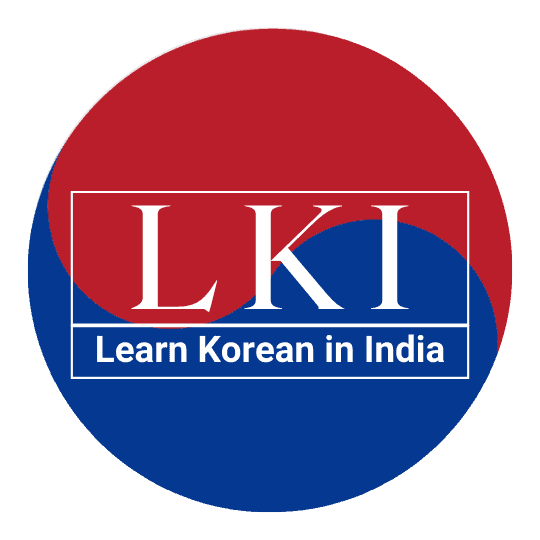여러분 안녕하세요!
Welcome to the third Lesson from Learn Korean in India.
Today’s lesson is going to be very exciting. After this lesson you’ll be able to introduce yourself in Korean. Ain’t it amazing?
What you will learn in this lesson -
- Introducing yourself.
- Telling your name in Korean.
- Country names, languages and nationalities
- Difference between ~ㅂ니다 and ~요 language forms.
- Making Present tense sentences in Korean Using Object particles and location particles.
- Using Honorific language.
Let’s get started.
Listen to the audio given below.
[ This text is taken from the book SNU Level 1]
안녕하십니까? [ Hello, how do you do?]
제 이름은 김영숙입니다. [ My name is Youngsook Kim.]
네, 반갑습니다, 영숙 씨. [ Nice to meet you Mr.Youngsook. ]
저는 윌슨입니다. [ I am Wilson.]
저는 영국 사람입니다. [ I am English. ]
저는 한국어를 공부합니다. [ I study Korean. ]
How to introduce yourself in Korean?
Start with a Hello (안녕하세요!)
I am ___. ( 저는 ___ 입니다. )
Or you can say,
My name is ___. ( 제 이름은 ___ 입니다. )
You can also tell about your profession, for instance
- I am a Doctor. 저는 의사입니다.
- I am a student. 저는 학생입니다.
You can also explain your work, for instance
- I study Korean. 저는 한국어를 공부합니다.
- I am ( Your nationality). 저는 (나라)사람입니다.
For ex, I am Korean. 저는 한국 사람사람입니다.
Sample Introduction,
SAMPLE 1
안녕하세요 [Hello]
제 이름은 리야입니다. [My name is Riya.]
저는 인도 사람입니다. [I am Indian.]
학생입니다. [(I am) student. ]
저는 한국어를 공부합니다. [ I study Korean.]
SAMPLE 2
안녕하세요 [ Hello]
저는 김수진입니다. [ I am Sujin Kim.]
저는 한국 사람입니다. [ I am Korean.]
저는 요리사입니다. [ I am a Chef.]
저는 케이크를 굽습니다. [ I bake cakes.]
Try writing your introduction in Korean . You can also try including down more sentences.
Object Marking Particles
As we know Korean language has many particles which are use in sentences for grammatical purposes. So far we have studied Topic marking particle(은/는) and Subject marking particle(이/가). Today we'll learn about Object marking particle. 을/를 are the object marking particles which marks the object of a verb in the sentence.
- 을 is used with a word that ends with a final consonant. Ex, 밥을
- 를 is used with a word that ends without a final consonant. Ex ,한국어를
Polite way of addressing people " -씨 " is a term of address that can be added at the end of someone's name to make it sound more polite in Korean language . It can be used with first name or full name, regardless of gender. It is rather impolite to use " -씨 " with the first name only.
Most of the times, Koreans don’t take names of the person , unless they’re a acquaintance. However when they take names, they add 씨 after the names to make it sound more polite.
Suppose if your name is Youngsook , they’ll say 영숙씨 (Mr.Youngsook).
Nationalities and languages
사람 is added after the country's name to indicate one's nationality , and 어 is added after the country's name to indicate that country's language.
1. 한국 사람 [Korean (Person)]
한국어[ Korean (Language)]
2. 일본 사람 [Japanese (Person)]
일본어 [Japanese (Language)]
3. 중국 사람 [ Chinese ( Person)]
중국어 [ Chinese (Language)]
4. 영국 사람 [English (Person)]
영국어 [English (Language)]
5. 미국 사람 [American (Person)]
영국어 [English (Language)]
Sentence Structures
- N은/는 N-입니다. [ N is N.]
Following this sentence pattern we can make several sentences like,
저는 윌슨 입니다. [ I am Wilson]
윌슨은 영국 사람입니다. [ Wilson is English.]
리야는 여자아이입니다. [Riya is a girl.]
- 제는 N [ My N]
Following this pattern we can make several sentences like,
제 이름은 윌슨입니다. [ My name is Wilson. ]
이것은 제 잭입니다. [ This is my book.]
그것은 제 운동화가 아닙니다. [Those are not my sneakers.]
- N은/는 N을/를 V -ㅂ니다/ -습니다.[ N V N]
Here, 을/를 is attached to the object of the verb.
Regarding verb ending, " -ㅂ니다 " is used with the verbs whose verb stem ends without a final consonant ( Ex,하다, 공부하다). While " -습니다 " is used with the verbs whose verb stem ends with a final consonant ( Ex, 먹다, 읽다).
Following this pattern we can make several sentences like,
윌슨은 일본어를 공부합니다. [ Wilson studies Japanese. ]
선생님은 밥을 먹습니다. [ Teacher eats his meal.]
NOTES:
- The most common greeting in Korean is 안녕하세요 , however in a very formal situation, we say 안녕하십니까 ?.
- -씨 is added after a person’s name to make it sound more polite.
- -ㅂ니다 is used with verb stem having final consonant and -습니다 is used with verb stem having no final consonant.
Click on the link to see the video lecture :
We are using the book SNU Level 1 as reference to teach here. If you don’t have this book, click here to download it’s pdf for free : https://www.pdfdrive.com/korean-level-1-e186280494.html
And try solving the practice questions by yourself.
Keep on practicing, meet you in the next lesson.
Thank you.

